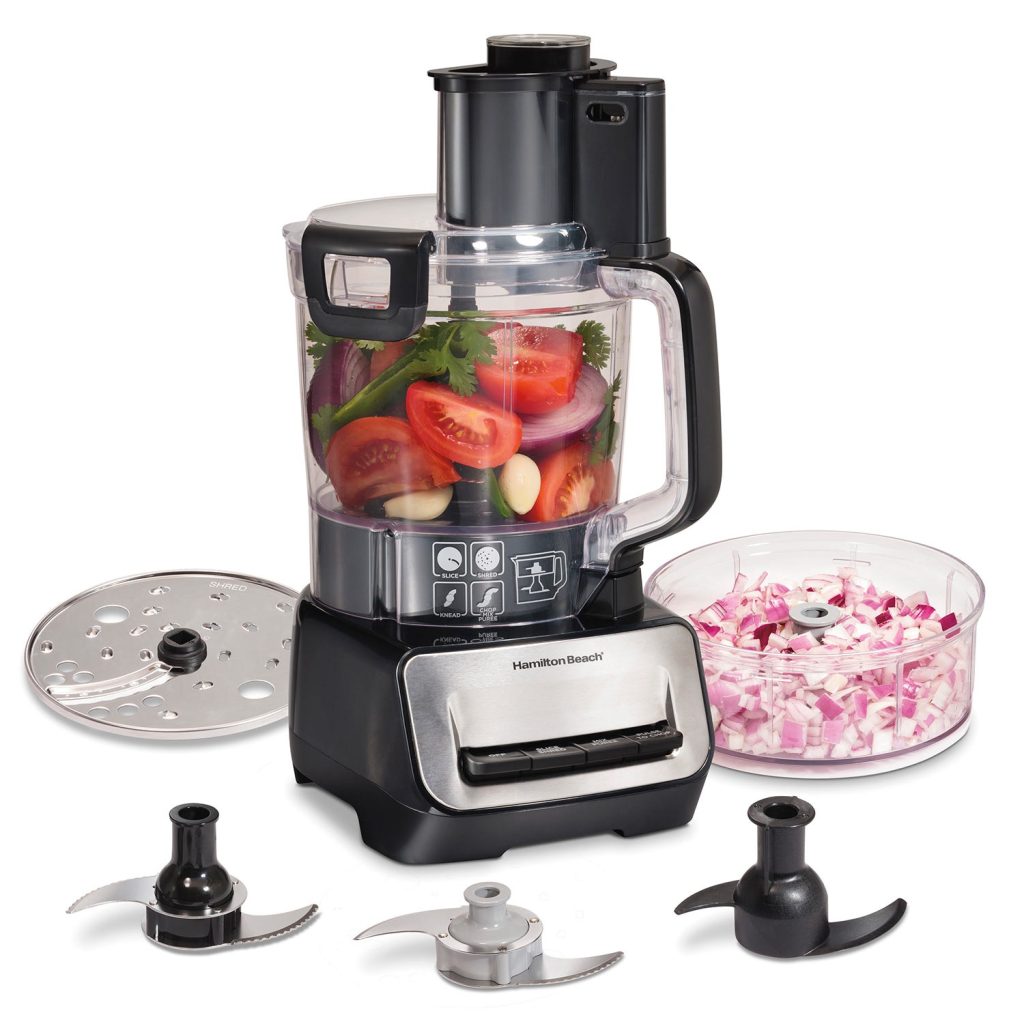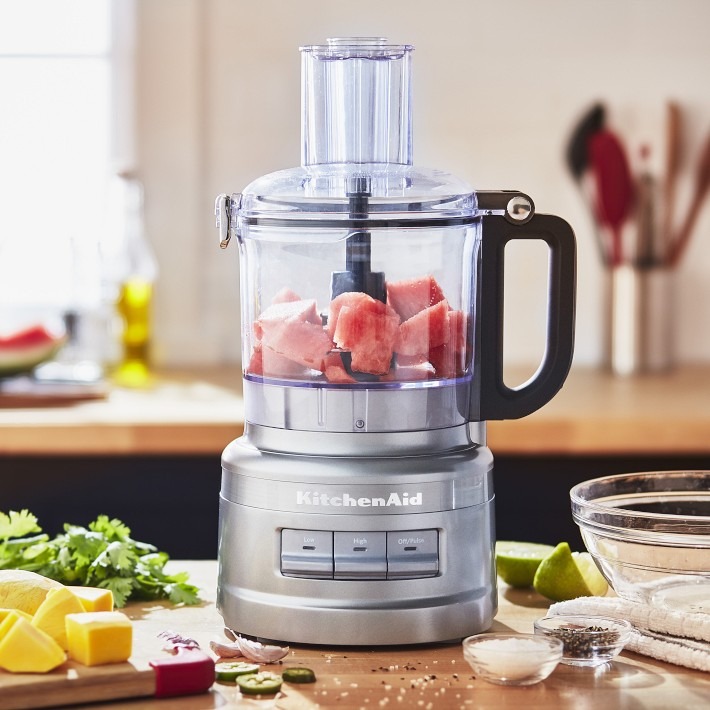
The Essentials of a Food Processor
What does food processor do? When considering what does a food processor do, it’s important to know its core functions. A food processor is a versatile kitchen appliance that users rely on for various food prep tasks. It typically includes a large bowl with a fitting lid, a motor at the base, and a range of attachments that enable it to perform its multitude of tasks.
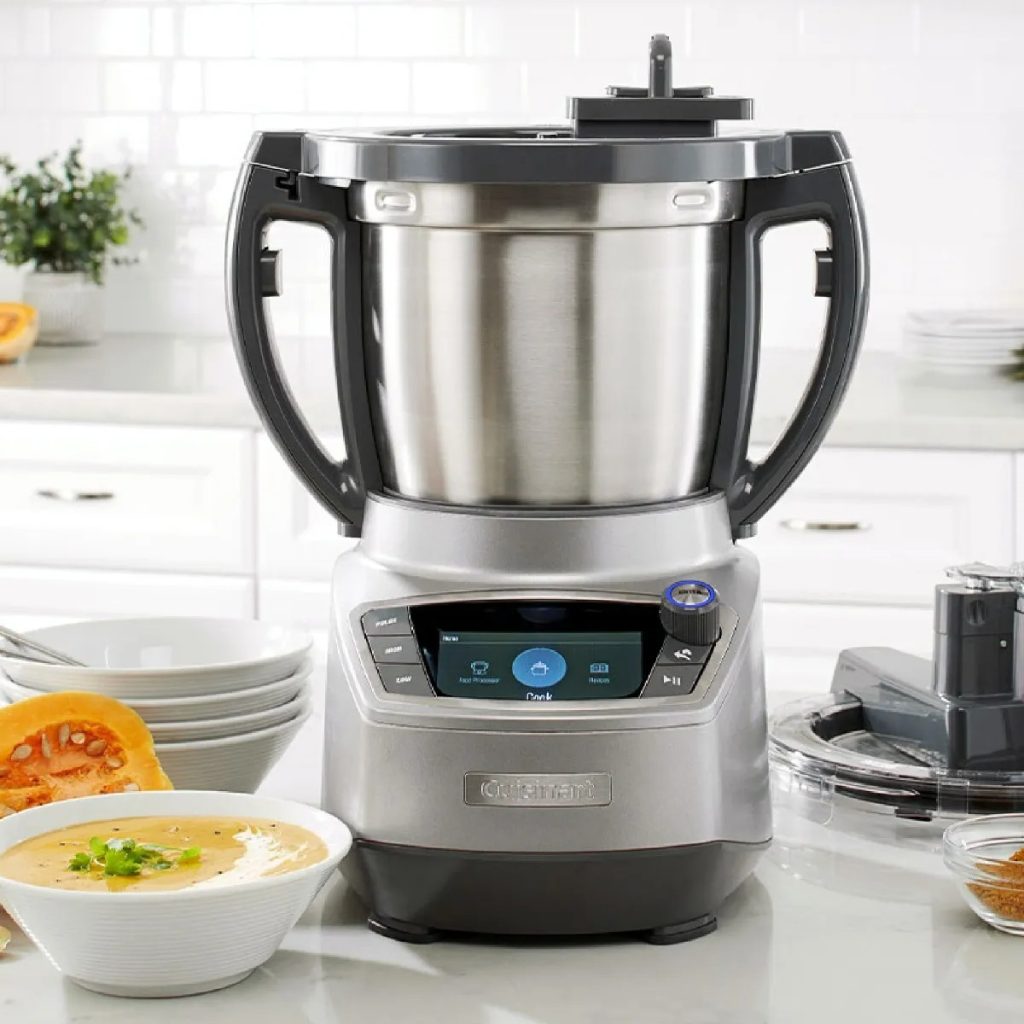
Different Blades and Attachments Explained
One might wonder, “What does a food processor do with all those attachments?” Let’s explore. The attachments are what make food processors so versatile. With the right blade or disk, you can transform how you work in the kitchen.
S-Blade
The S-blade, also known as the sabatier blade, is the standard attachment. It’s great for chopping vegetables and grinding meat. Use it to make sauces, hummus, and other spreads.
Dough Blade
A dough blade is less sharp than the S-blade. It’s specifically used for kneading dough. Think bread, pizza bases, and even pie crusts.
Shredding and Slicing Disks
These disks are your go-tos for shredding cheese and slicing vegetables. You can adjust the thickness for your needs. Use them for quick salads, slaws, or potato dishes.
Julienne Disk
Want matchstick veggies for stir-fries or garnishes? The julienne disk is your friend. It cuts food into long, thin strips with precision.
Whisk Attachment
For beating eggs or whipping cream, the whisk attachment saves the day. It’s less messy and faster than doing it by hand.
Citrus Juicer
Fresh juice is easy with a citrus juicer attachment. Press halves of oranges or lemons onto it, and let the machine do the work.
By understanding each attachment’s purpose, you can harness the full potential of your food processor. This knowledge allows for quick, efficient, and creative cooking, making what you thought was complex, surprisingly simple.
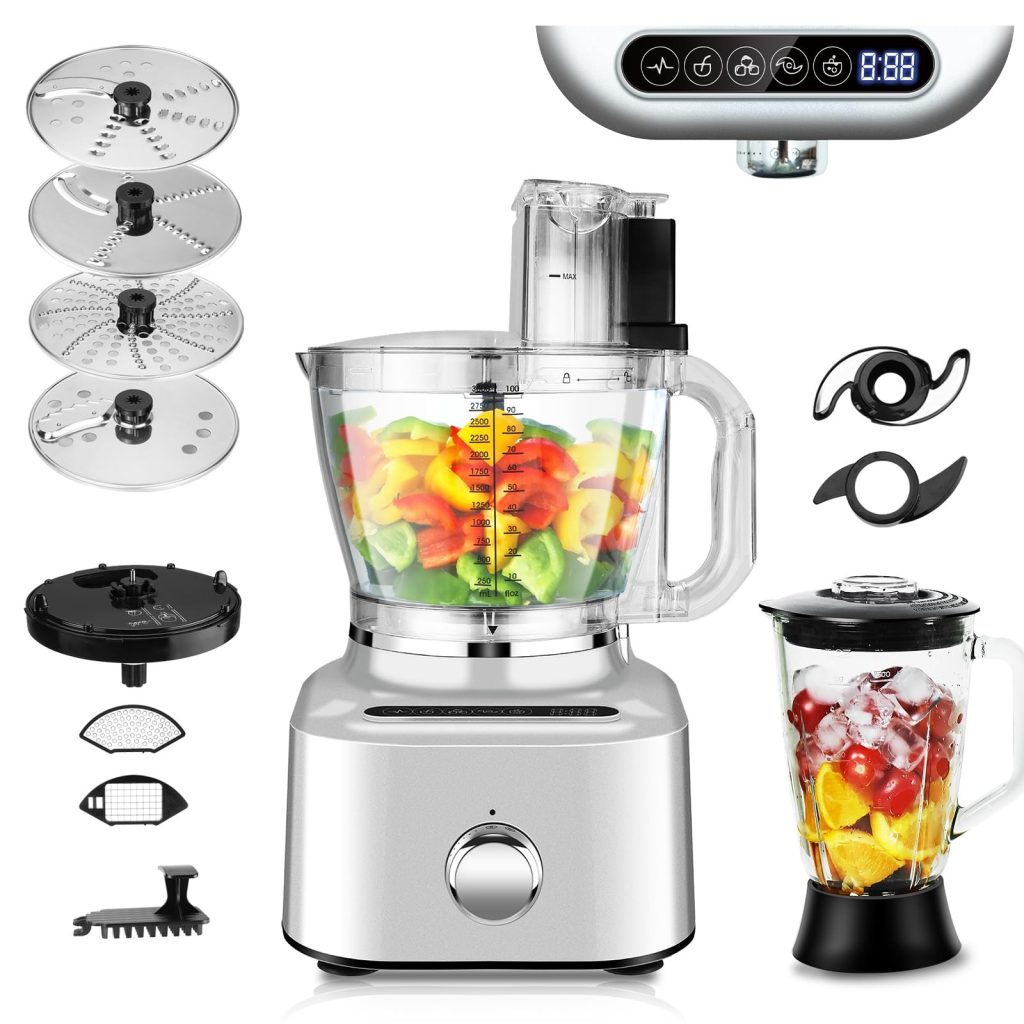
Slicing and Shredding with Ease
When it comes to slicing and shredding, food processors excel. You might wonder how this relates to what a food processor does beyond the basic chopping. The answer lies in the precision and speed that these kitchen workhorses provide. Here’s why a food processor should be your go-to tool for slicing and shredding:
- Consistent Thickness: With adjustable settings, this appliance can slice vegetables, fruits, and other items uniformly, taking the guesswork out of the process.
- Time-Saving: Imagine shredding blocks of cheese or cabbage for coleslaw in minutes without the strain on your arms, a task that manually could consume much valuable time.
- Multitasking Capabilities: While it slices or shreds on one end, you’re free to focus on other recipe prep, boosting kitchen efficiency.
To use the shredding and slicing disks, simply secure them in place according to your food processor’s instructions. Feed the food through the chute using the pusher, and voila, perfectly sliced or shredded ingredients are at your fingertips. Most importantly, this function allows home cooks to tackle culinary tasks that require precision with ease and confidence.
Pureeing and Emulsifying Made Simple
Understanding what a food processor does for pureeing and emulsifying tasks can revolutionize your cooking. These functions simplify the process of creating smooth pastes and stable emulsions, which can be challenging to achieve by hand.
- Smooth Purees: Whether it’s turning cooked vegetables into soup or making baby food, the food processor’s blades break down food to a velvety texture.
- Effortless Emulsifying: Salad dressings and mayonnaise require a steady blending of oil into other liquids. The food processor’s consistent motion creates perfect emulsions every time.
To puree, place your cooked ingredients in the bowl and pulse until you reach the desired consistency. For emulsifying, add the liquids slowly through the feed tube while the machine is running to allow the ingredients to blend seamlessly. This function not only saves time but also ensures a professional finish to your dishes.
Dough Kneading for Bakers
Bakers find joy in the magic of dough kneading. And what does a food processor do for bakers? It makes the task of kneading dough much simpler. Here’s how:
- Quick Kneading: Forget the tiring, hands-on method. A food processor can knead dough in minutes, not hours.
- Even Mixing: The dough blade’s design ensures all ingredients blend well. This means better bread, pastries, and pizzas.
- Less Mess: By keeping all ingredients contained, food processors reduce kitchen mess. This makes clean-up faster.
- Perfect Texture: Achieve the right dough consistency without guessing. The fast-moving blade works the dough to the precise texture needed for various recipes.
To use the dough blade, add your dry ingredients to the processor, then gradually mix in wet ones. Run the machine until the dough forms a ball around the blade. Your dough is now ready for rising and baking.
This function is a game-changer for bakers at any skill level. It provides a reliable and efficient way to prepare dough, ensuring consistent results every time. It’s clear that a food processor does more than chop; it’s an essential tool for anyone passionate about baking.
Chopping and Grinding Basics
Understanding what a food processor does starts with its most common uses: chopping and grinding. These are the fundamentals that make it an indispensable tool in the kitchen.
- Efficient Chopping: From onions to herbs, the food processor uses its sharp S-blade to chop ingredients quickly and uniformly. This speeds up meal prep significantly.
- Effective Grinding: Nuts and grains turn into flour or butter in a snap with the same blade. Home cooks can easily make fresh nut butter or ground spices.
Chopping and grinding in a food processor are simple. To chop, cut food into chunks and pulse until reaching the desired size. For grinding, use the pulse mode to control the texture, ensuring a consistent grind.
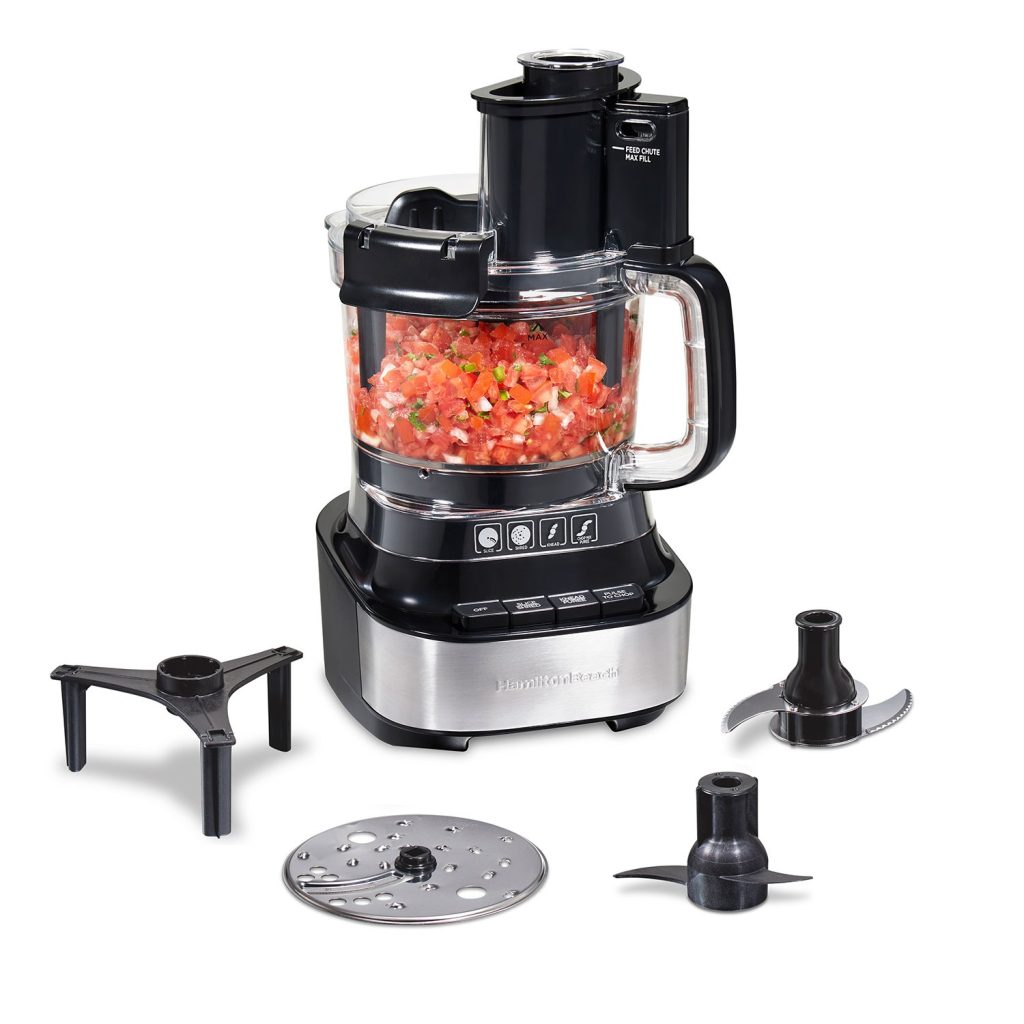
These basic tasks save time and effort and are essential for numerous recipes. Whether you’re prepping ingredients for a meal or making homemade seasonings, the food processor handles it with ease. It’s clear that a food processor does much more than just mix ingredients; it’s a staple for efficient and precise kitchen work.
How to Use a Food Processor for Juicing
Juicing with a food processor is easy and efficient. Here’s how to do it:
- Prepare Your Fruits or Vegetables: Wash and cut your produce into chunks that fit your food processor’s feed tube.
- Attach the Citrus Juicer: If you have a citrus juicer attachment, now’s the time to attach it to your food processor.
- Process the Produce: Turn on the machine and push the produce through the feed tube using the pusher.
- Strain the Juice: Once you have your processed liquid, strain it with a fine mesh sieve to remove any pulp.
- Enjoy Fresh Juice: Pour your fresh juice into a glass and enjoy immediately for the best taste and nutrient quality.
Whether you’re making orange juice for breakfast or a vegetable blend for a health boost, the food processor helps you create delicious juices effortlessly. Always remember to follow your machine’s guidelines for the best juicing results.
Cleaning and Maintenance Tips
Keeping your food processor in top condition means regular cleaning and maintenance. Here’s what you should do:
- Read the Manual: Always start by reading your food processor’s manual. It provides specifics for care.
- Disassemble Before Cleaning: Take apart the removable parts. Blades, bowls, and lids usually need separate cleaning.
- Hand Wash Blades: Carefully hand wash blades with warm, soapy water. Avoid dulling the blades.
- Use Gentle Detergents: Pick mild detergents for the plastic parts to prevent them from becoming brittle.
- Dry Parts Thoroughly: After washing, dry all the parts completely. This helps prevent mold build-up.
Regular maintenance not only extends the life of your food processor but also ensures it performs well every time you need it. Following these simple tips, you can keep your food processor clean and functional, making it ready for any task at a moment’s notice.
